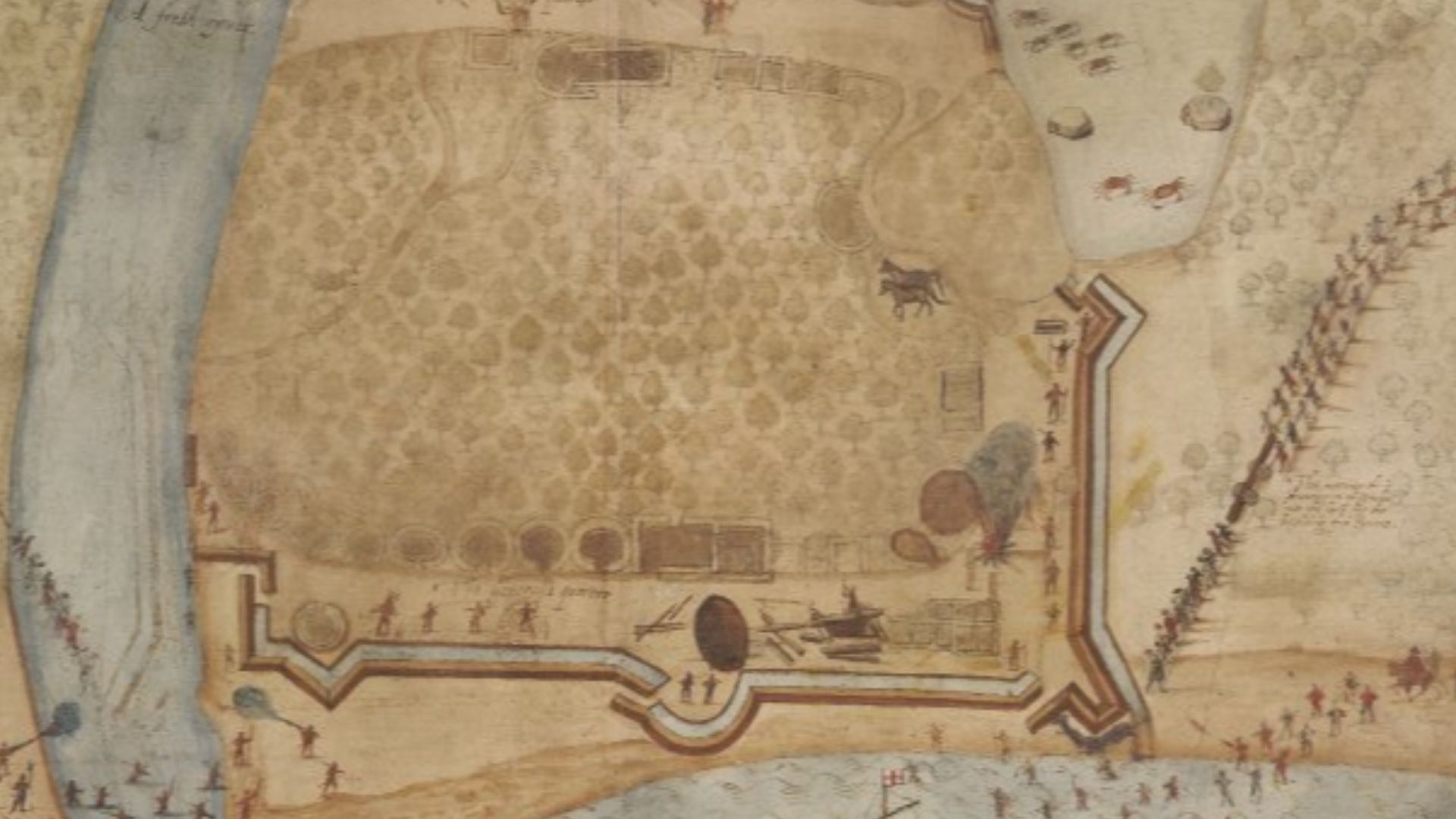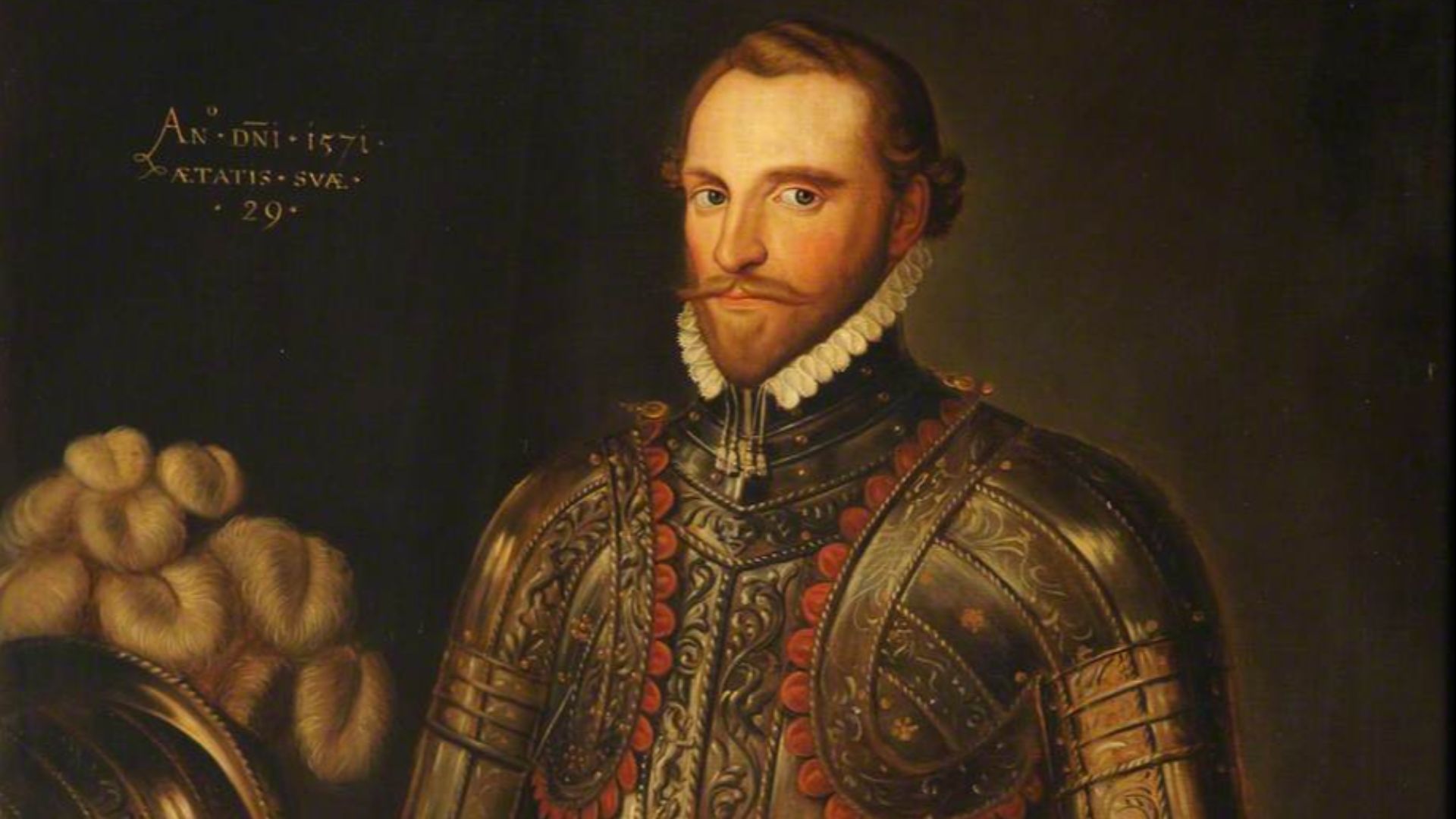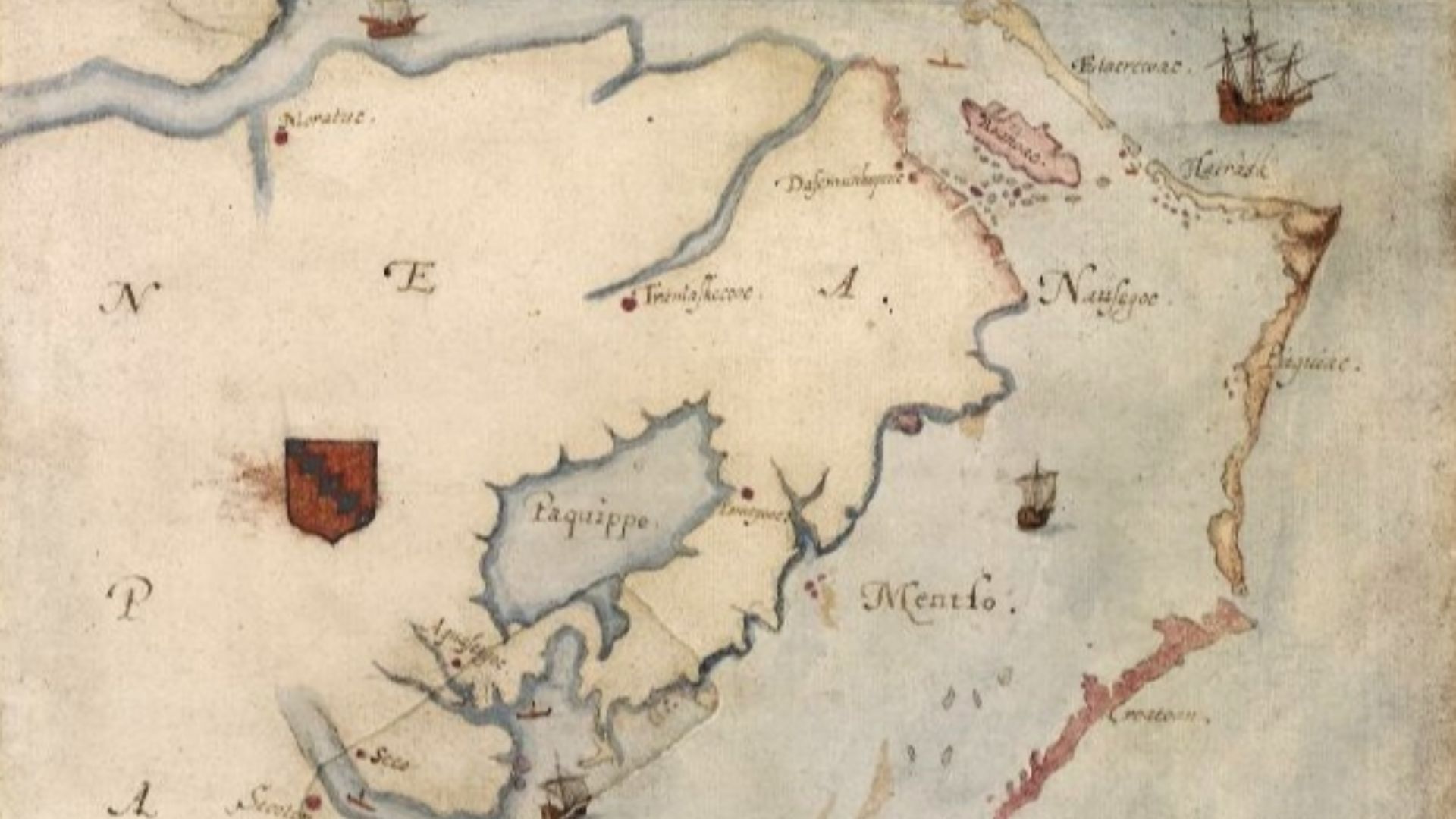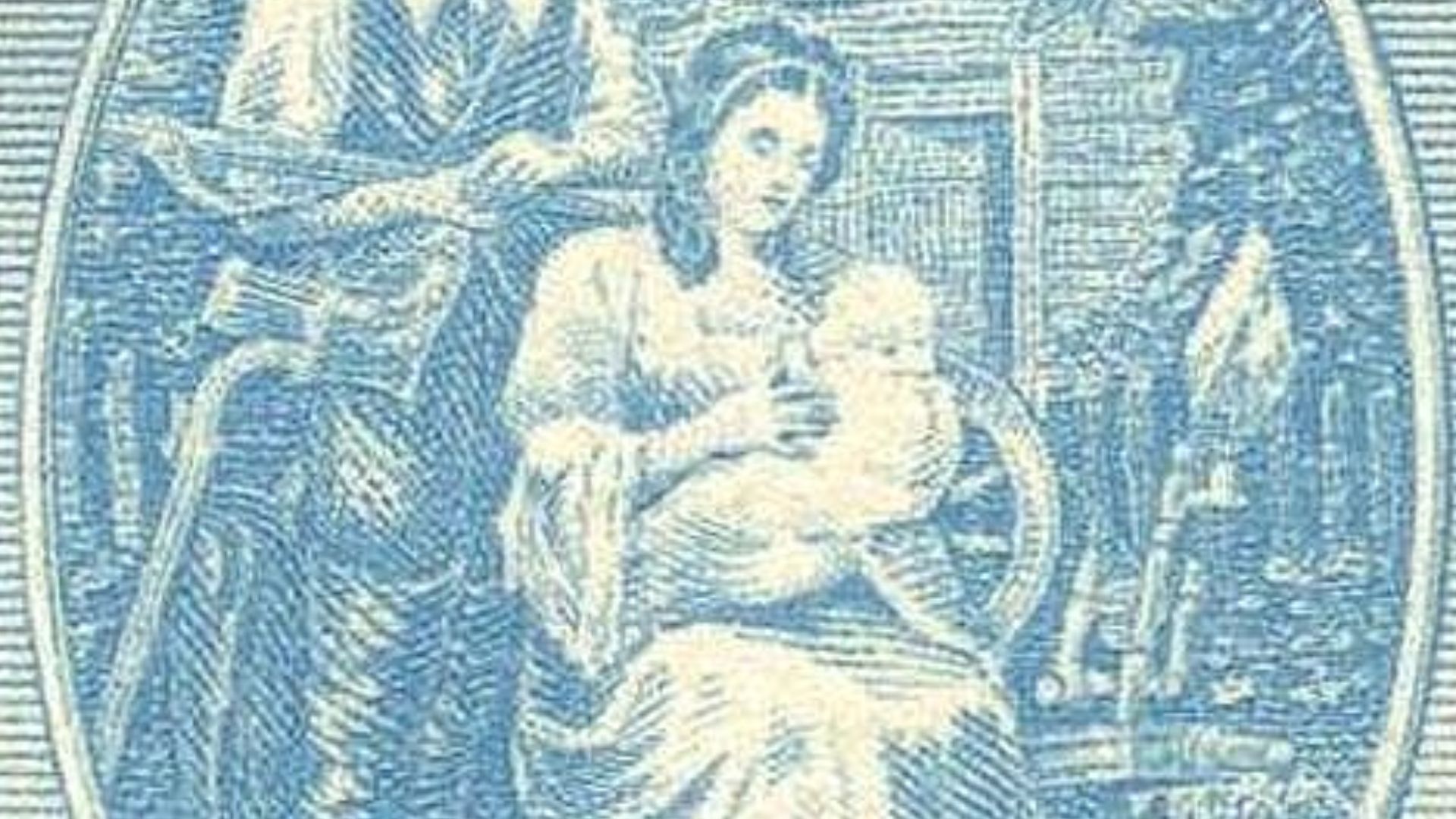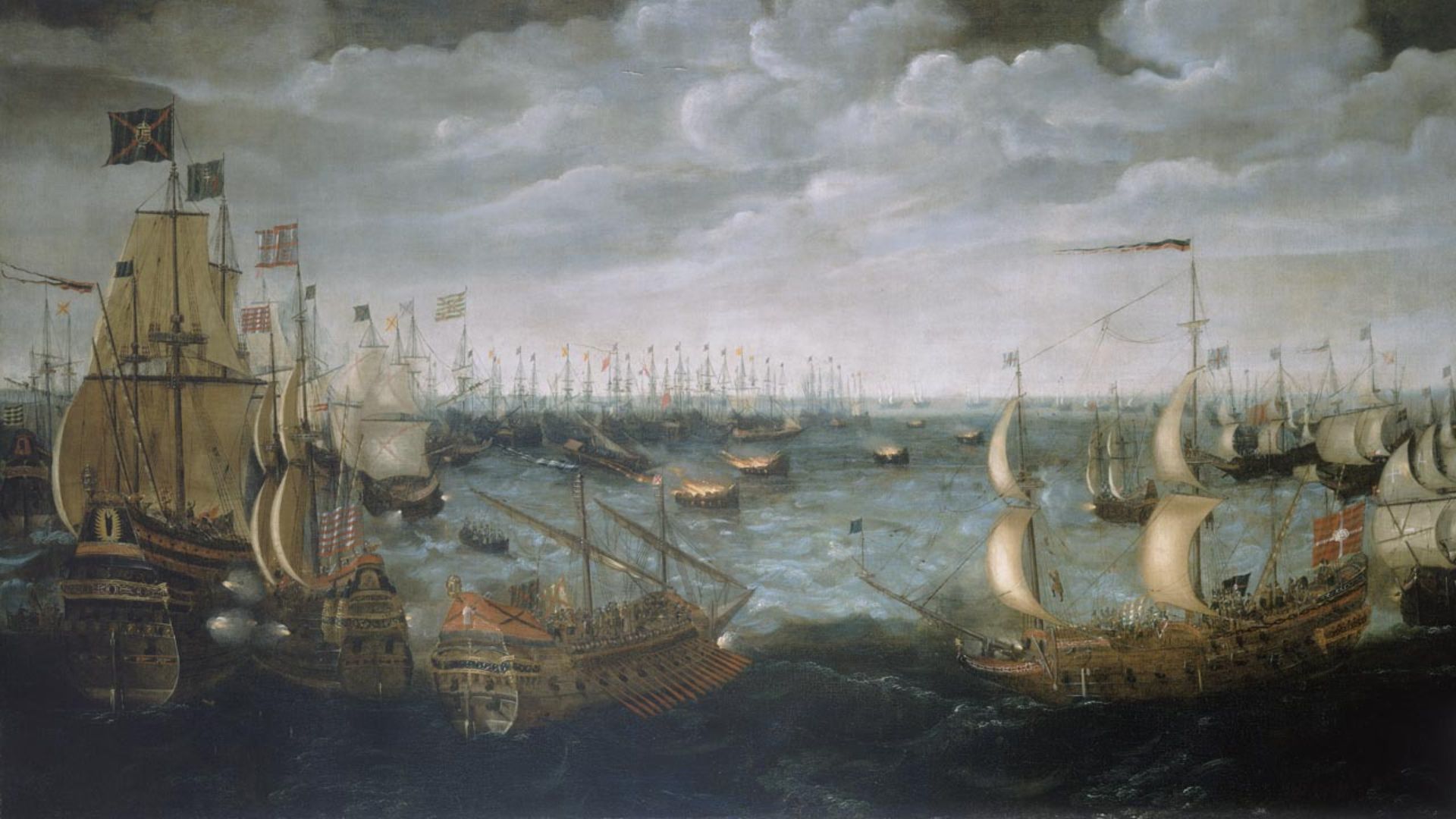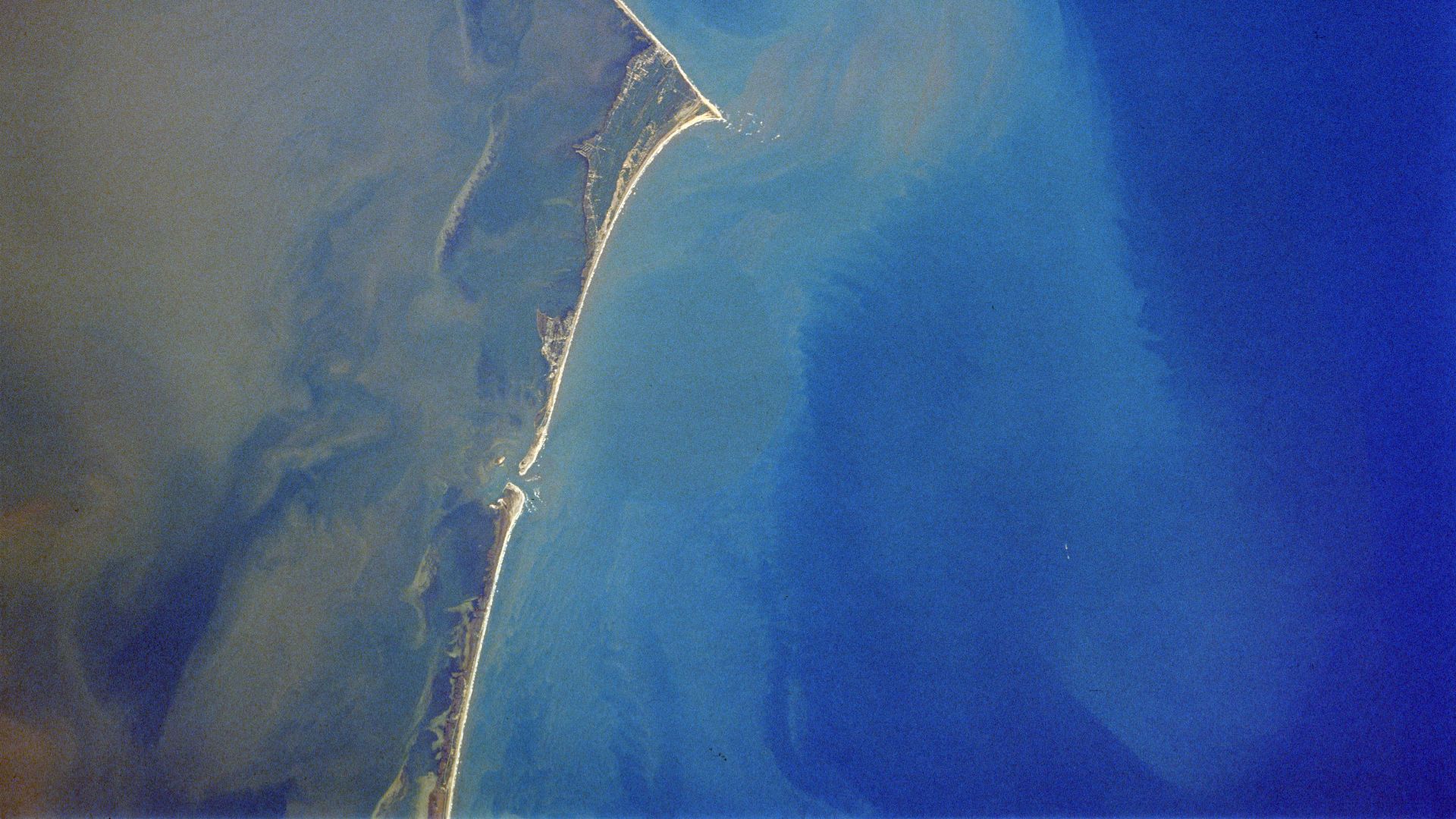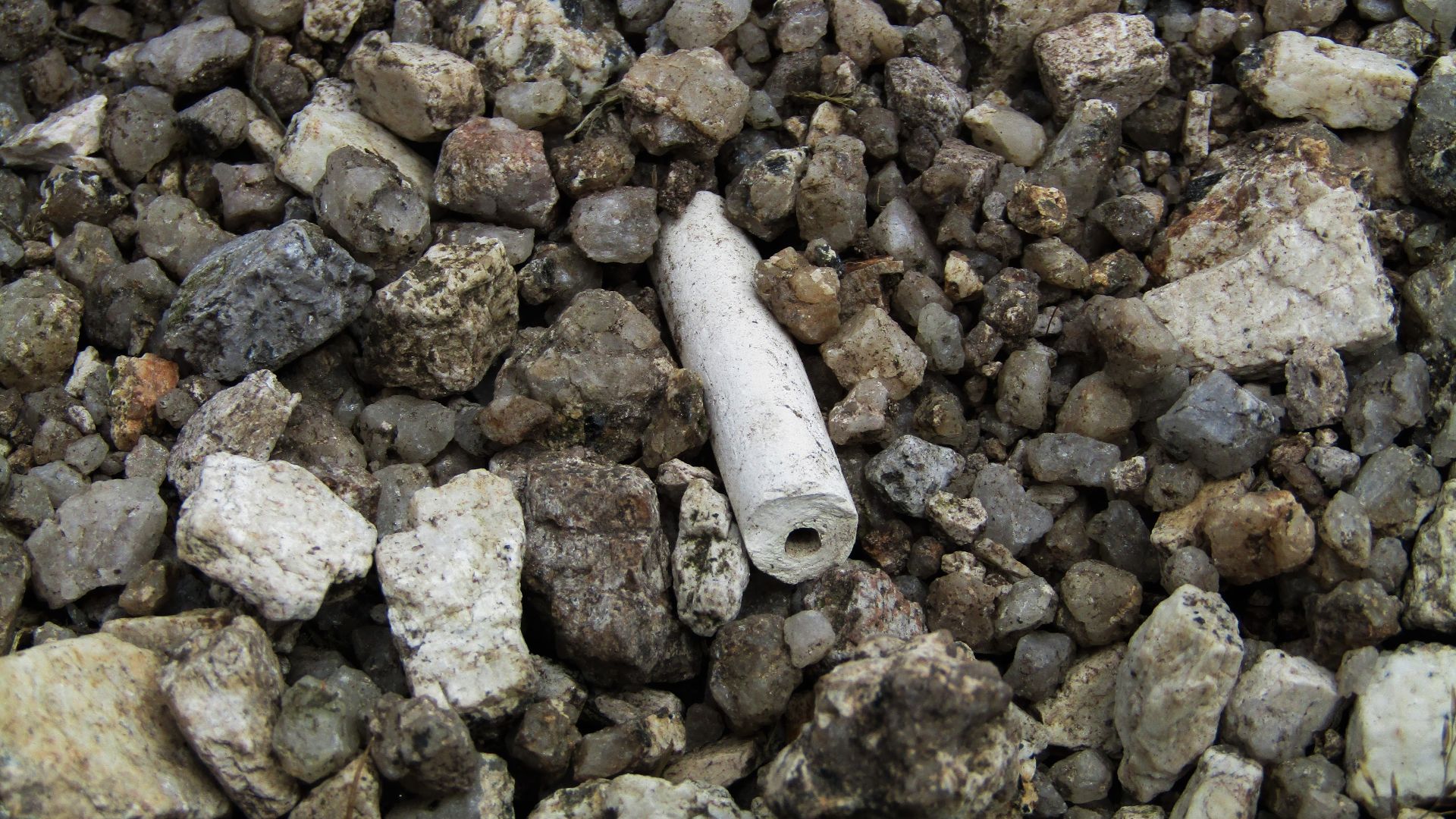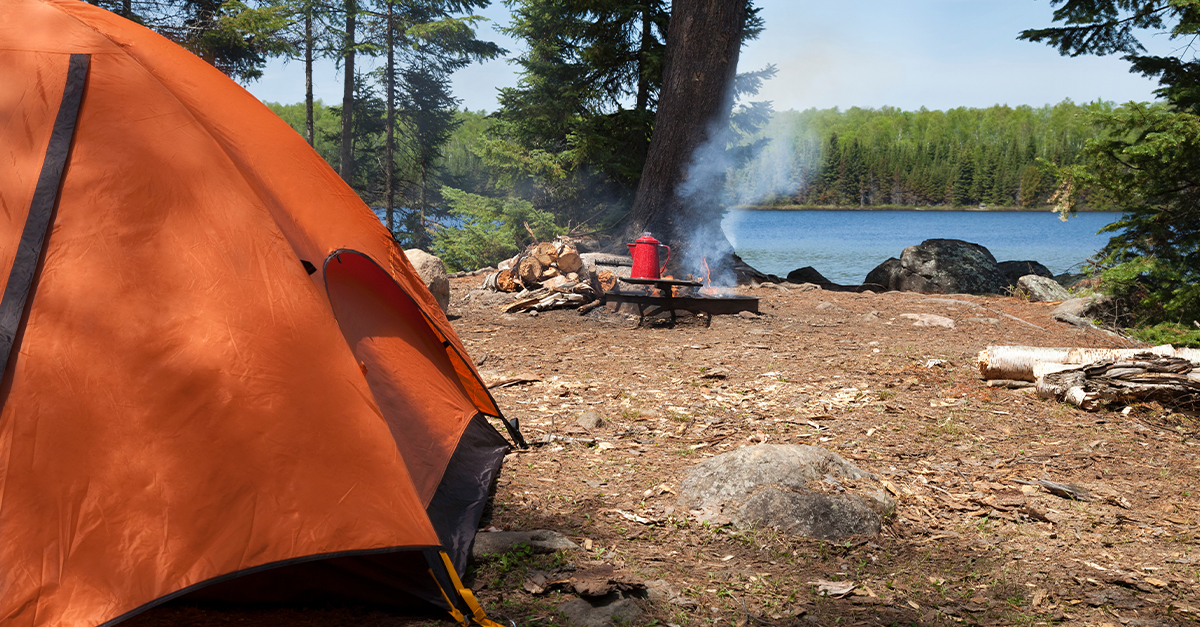Gone Without A Trace
Roanoke's vanished colonists launched one of America's first excellent mystery tales. They came seeking opportunity in a new world but left us with nothing but questions.

First English Settlement Attempt
The Roanoke Colony was England's first attempt to set up a permanent settlement in North America. It was founded in 1585 on Roanoke Island in present-day North Carolina. The colony later disappeared without explanation and became known as “The Lost Colony”.
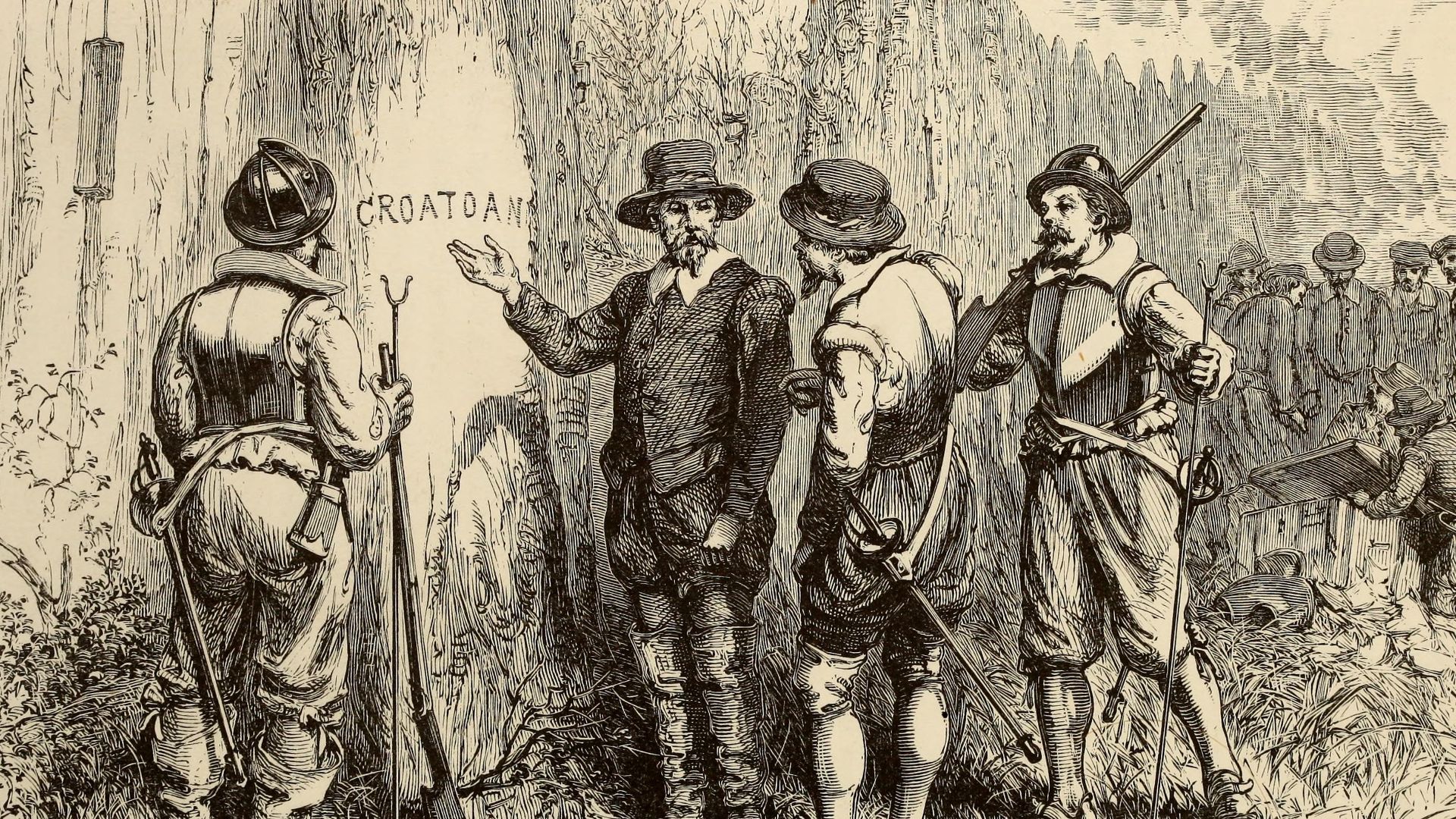 Design by William Ludwell Sheppard, Engraving by William James Linton, Wikimedia Commons
Design by William Ludwell Sheppard, Engraving by William James Linton, Wikimedia Commons
Verrazzano's Misconception
Giovanni da Verrazzano explored the Outer Banks in 1524, mistaking Pamlico Sound for the Pacific Ocean. His reports of a possible shortcut to Asia (China) sparked European interest that ultimately influenced England's colonial ambitions in the region under Queen Elizabeth I.
 Allegrini, Francesco (1729-17..). Graveur ; Zocchi, Giuseppe (1711-1767). Peintre, Wikimedia Commons
Allegrini, Francesco (1729-17..). Graveur ; Zocchi, Giuseppe (1711-1767). Peintre, Wikimedia Commons
Raleigh's Charter
Sir Walter Raleigh received a charter from Queen Elizabeth I in 1584 to colonize North America. The charter specified that he needed to establish a colony by 1591 or would lose all colonization rights. Unable to leave England, Raleigh delegated the missions to associates.
Initial Exploration
So, Philip Amadas and Arthur Barlowe led the first expedition in 1584. They made contact with the Secotan tribe and brought two natives back to England. These were Manteo and Wanchese. Their reports described the region as pleasant and bountiful, possibly exaggerated to please Raleigh.
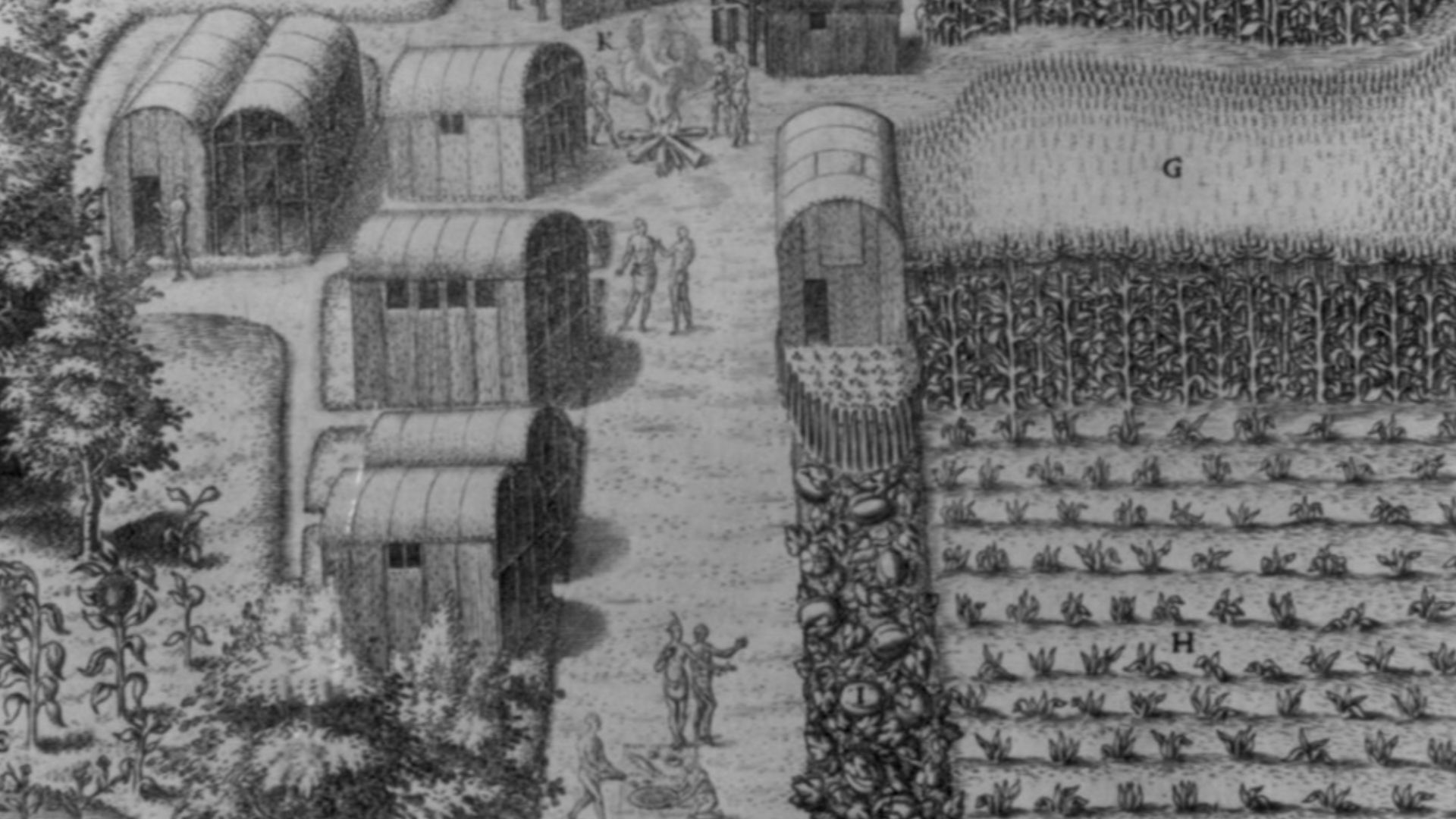 Bry, Theodor de, 1528-1598, engraver; White, John, active 1585-1593, artist, Wikimedia Commons
Bry, Theodor de, 1528-1598, engraver; White, John, active 1585-1593, artist, Wikimedia Commons
Lane's Colony
Ralph Lane established the very first colony in 1585 with approximately 107 men. The expedition was primarily military in nature and focused on exploration and resource evaluation. Civilian attendants included scientist Thomas Harriot and artist John White, who documented the settlement.
 Internet Archive Book Images, Wikimedia Commons
Internet Archive Book Images, Wikimedia Commons
Mosquetal Base Camp
During the 1585 expedition, when the fleet was separated by storms, Grenville's Tiger made landfall at Mosquetal (Puerto Rico). While waiting for the other ships, Lane's men practiced building fortifications and also constructed a new pinnace to replace one lost at sea.
Native Relations Deteriorate
However, relations with local tribes quickly deteriorated. After a silver cup went missing, English forces burned down the entire village of Aquascogoc and its crops. This severe retaliation for a minor offense brought about lasting hostility between colonists and local Native Americans.
Pemisapan's Assassination
On learning about Pemisapan's planned war council against the English, Lane led a preemptive strike on May 31, 1587. During the attack, Pemisapan was shot and fled into the woods, but Lane's men caught up to him, severed his head, and displayed it outside the fort.
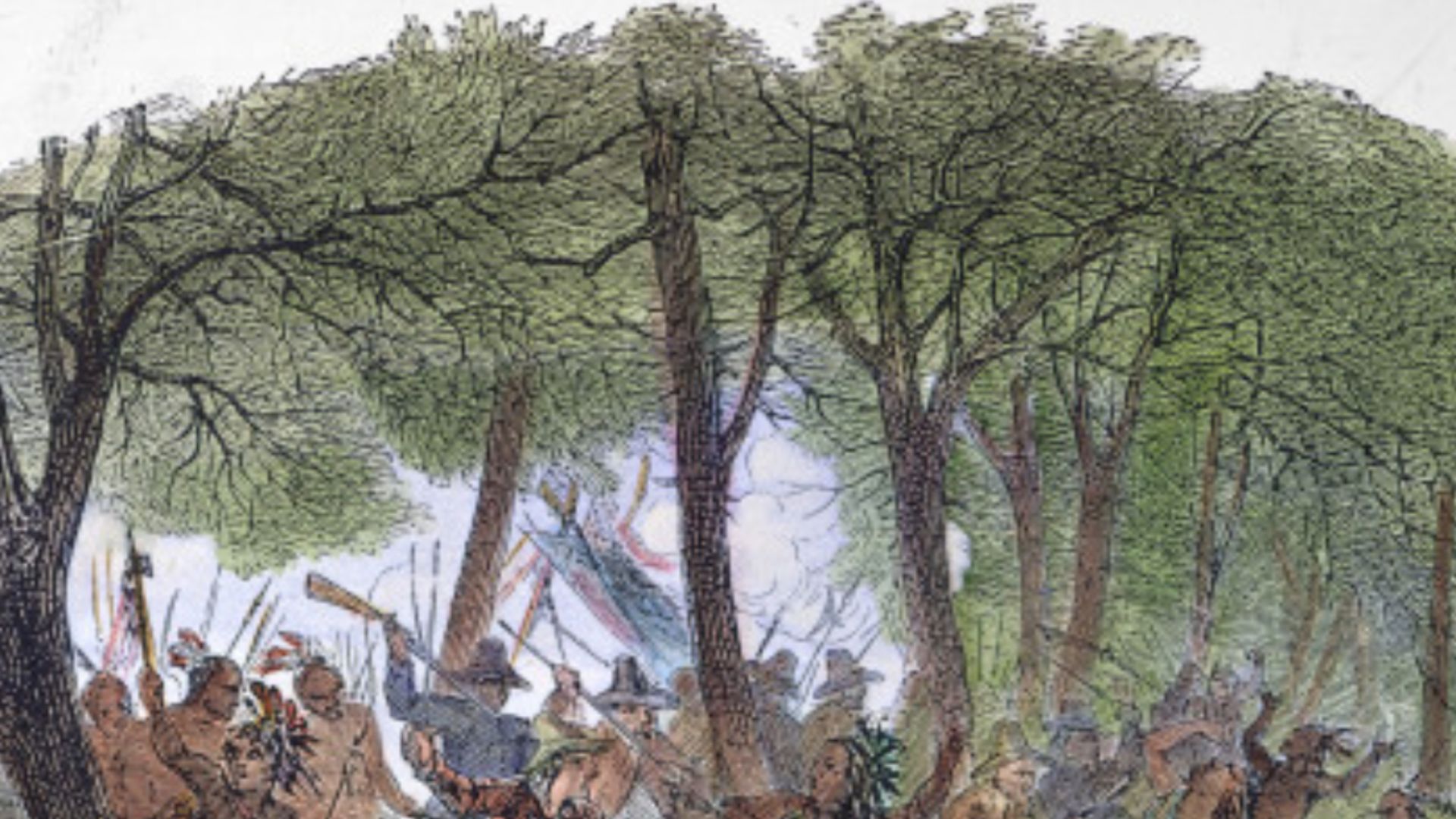 Unknown authorUnknown author, Wikimedia Commons
Unknown authorUnknown author, Wikimedia Commons
Colony Abandonment
In 1586, Sir Francis Drake visited Roanoke after raiding Spanish settlements. Lane's colonists, who were struggling with food shortages and poor native relations, abandoned the colony and returned to England with Drake. This left the settlement empty and buildings intact.
 Unidentified painter, Wikimedia Commons
Unidentified painter, Wikimedia Commons
Grenville's Detachment
Sir Richard Grenville showed up not long after Lane left with supplies and reinforcements. When he found Roanoke empty, he left behind fifteen men to hold onto England's claim to the place. Unfortunately, those men disappeared later, probably taken out in attacks by the locals.
Second Colony Established
John White headed up a second expedition in 1587 with about 115 colonists, including women and kids. They were supposed to be heading to the Chesapeake Bay, but the pilot, Simon Fernandes, made them stay at Roanoke instead of going where they had originally planned to settle.
Virginia Dare's Birth
On August 18, 1587, Eleanor Dare (John White's daughter) gave birth to Virginia Dare. She was the first English child born in America. Records indicate another colonist, Margery Harvye, also gave birth soon afterward, though details about her child are not documented.
White's Reluctant Departure
The colonists managed to convince John White to return to England for supplies in August 1587. White departed reluctantly, as he planned to return quickly. Sadly, the War with Spain and the threat of the Spanish Armada prevented his return until 1590, delaying assistance to the colony.
Delayed Return
After many attempts, he finally secured passage on a Caribbean pirate expedition led by John Watts, as regular ships were barred from leaving England. Only after completing profitable raids on Spanish settlements did two ships, Hopewell and Moonlight, take him to Roanoke.
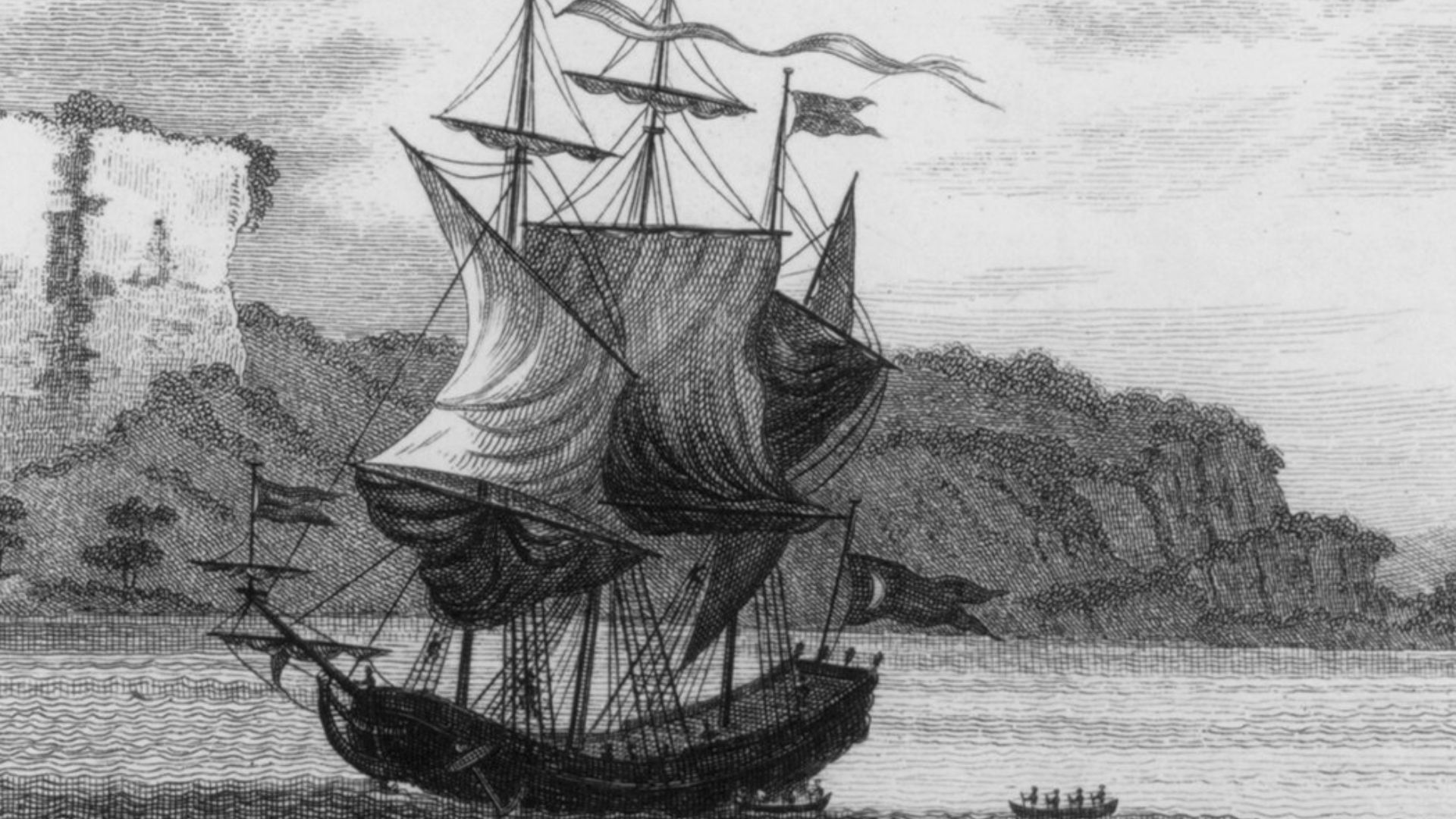 Miscellaneous Items in High Demand, PPOC, Library of Congress, Wikimedia Commons
Miscellaneous Items in High Demand, PPOC, Library of Congress, Wikimedia Commons
The Abandoned Settlement
When the man returned on August 18, 1590 (his granddaughter's third birthday), he found the settlement deserted. The buildings had been dismantled in an orderly fashion with no signs of struggle or violence. No human remains or graves were discovered either.
 Engraving by John Parker Davis, Wikimedia Commons
Engraving by John Parker Davis, Wikimedia Commons
Croatoan Message
White discovered the word "CROATOAN" carved into a fence post and saw "CRO" on a nearby tree. Before they left in 1587, the colonists decided to carve a note showing where they were headed and add a cross if they were leaving in a hurry.
Failed Search Efforts
He believed that the colonists had relocated to Croatoan Island (now Hatteras Island), which was home to friendly natives. But bad weather, broken anchor cables, and diminishing supplies forced his ships to abandon the search and return to England without confirmation.
Spanish Reconnaissance
Spanish officials had been keeping an eye on English colonies since 1585. In 1588, Vicente Gonzalez stumbled upon Port Ferdinando near Roanoke while looking for English bases. However, he didn’t dig deep into it and just reported that it seemed abandoned.
 Ken Lund from Reno, Nevada, USA, CC BY-SA 2.0, Wikimedia Commons
Ken Lund from Reno, Nevada, USA, CC BY-SA 2.0, Wikimedia Commons
Jamestown Inquiries
After Jamestown was established in 1607, John Smith found out from the Powhatan natives about some towns where folks were wearing European clothes. There was a rough map that pointed to a spot called "Pakrakanick," where "four guys dressed in European style" lived and came from Roonocok.
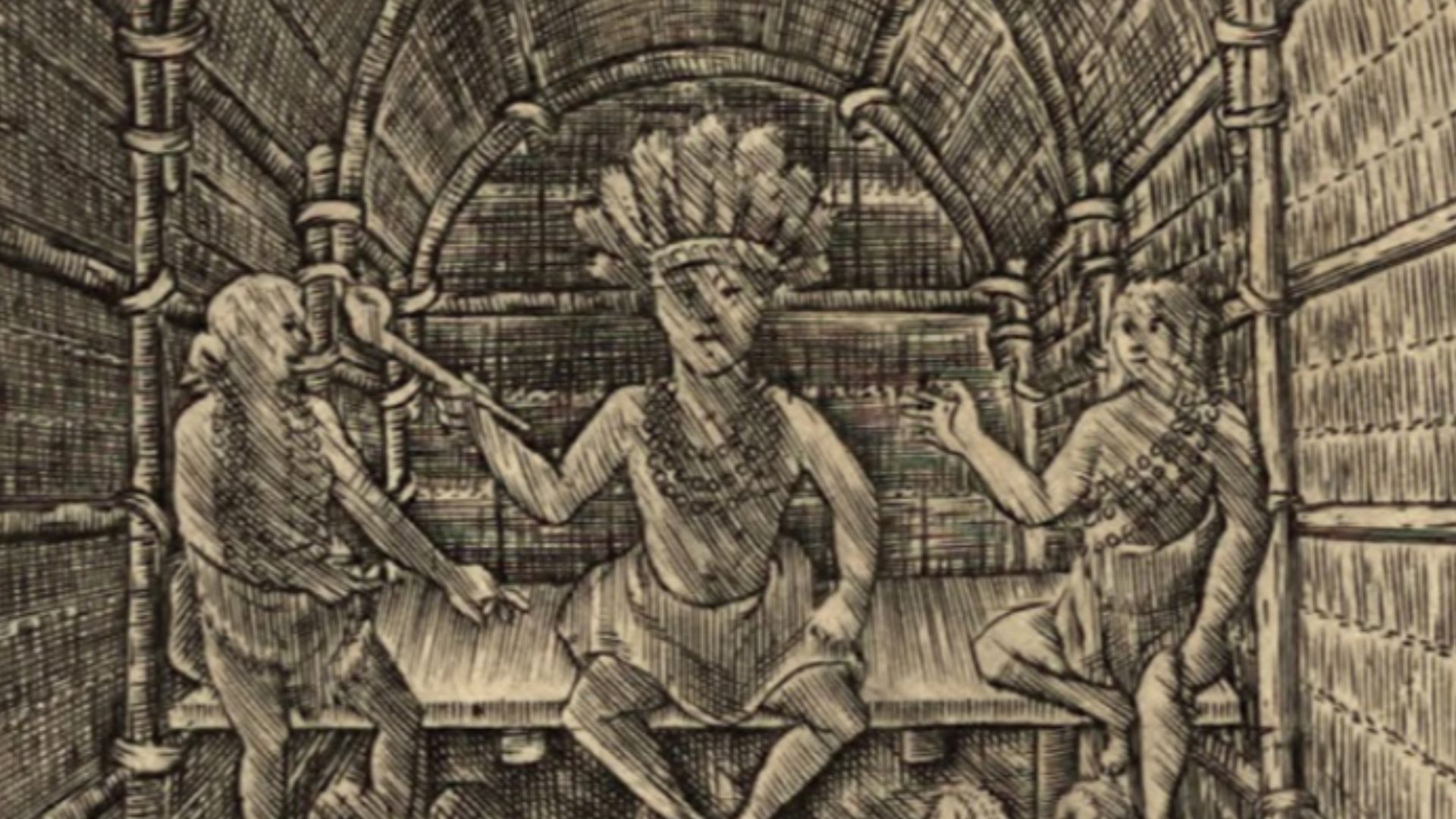 engraved by William Hole, Wikimedia Commons
engraved by William Hole, Wikimedia Commons
Powhatan's Account
Soon, by 1609, word reached England that the colonists had been massacred by Wahunsenacawh (Chief Powhatan). Samuel Purchas later claimed Powhatan confessed to Captain Smith about the slaughter and possessed English utensils as proof. Note that Smith himself never confirmed this.
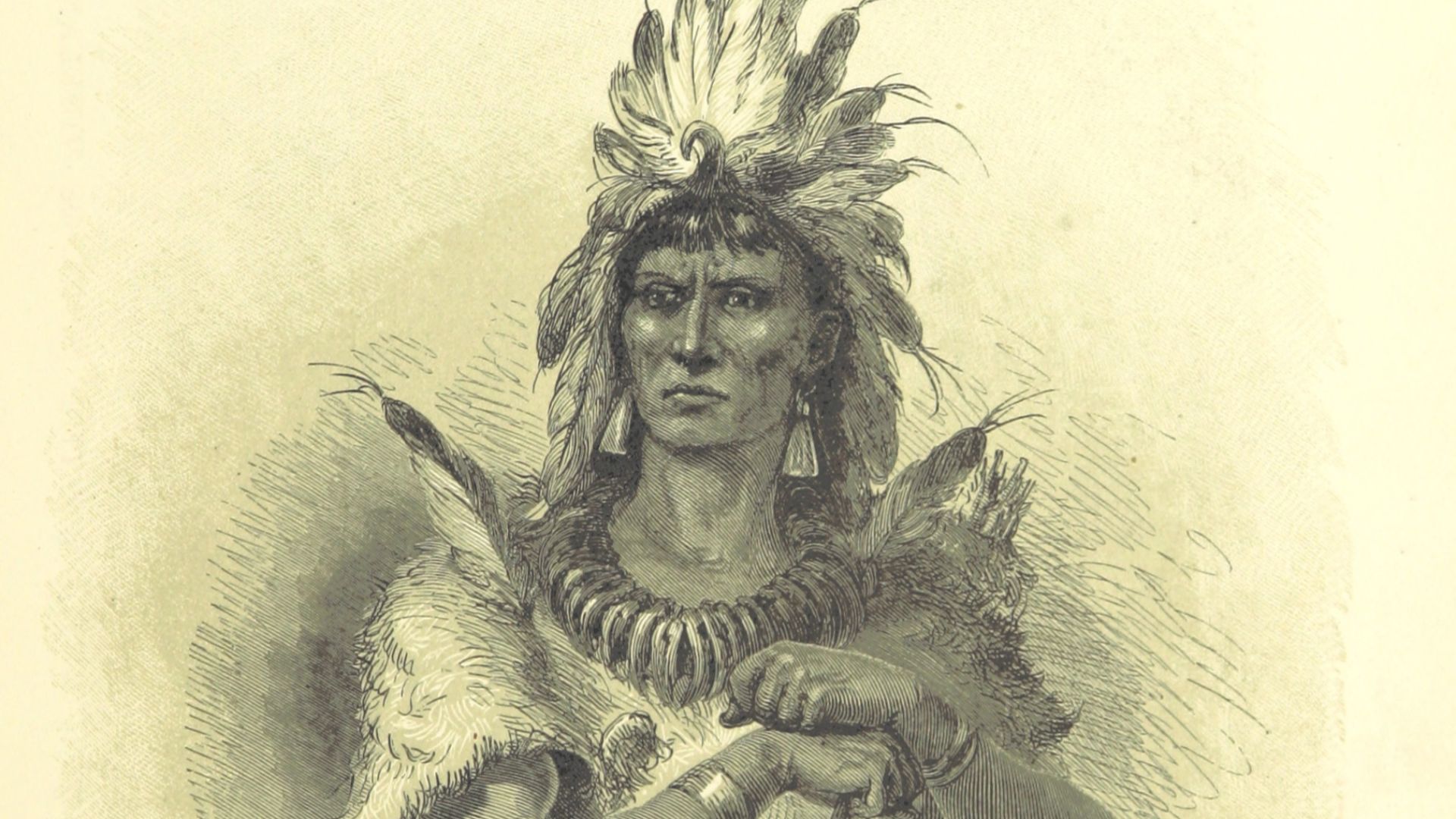 British Library, Wikimedia Commons
British Library, Wikimedia Commons
William Strachey's Report
William Strachey wrote in the year 1612 that the colonists lived peacefully with a tribe for twenty years before Wahunsenacawh attacked them. Supposedly, seven English survivors, comprising four men, two boys, and one woman, had fled to the Chowan River area.
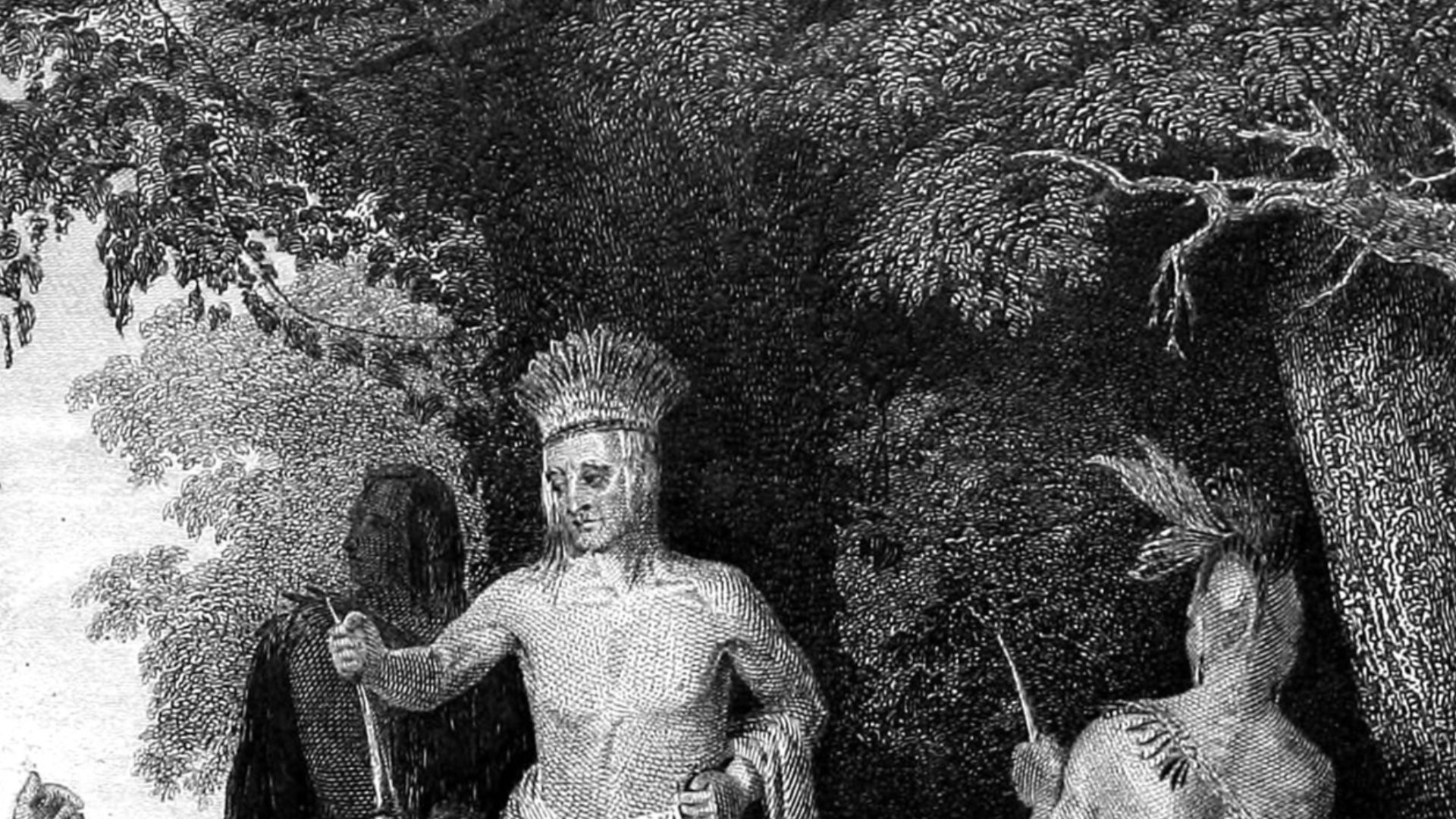 J. G. Chapman, painter; R. Hinshelwood, engraver, Wikimedia Commons
J. G. Chapman, painter; R. Hinshelwood, engraver, Wikimedia Commons
John Lawson's Investigation
Explorer John Lawson visited Hatteras Island between 1701 and 1709. He found the Hatteras people showing European influence. They claimed some ancestors were white, and some even had gray eyes. At Roanoke, Lawson also discovered fort remains, English coins, and a powder horn.
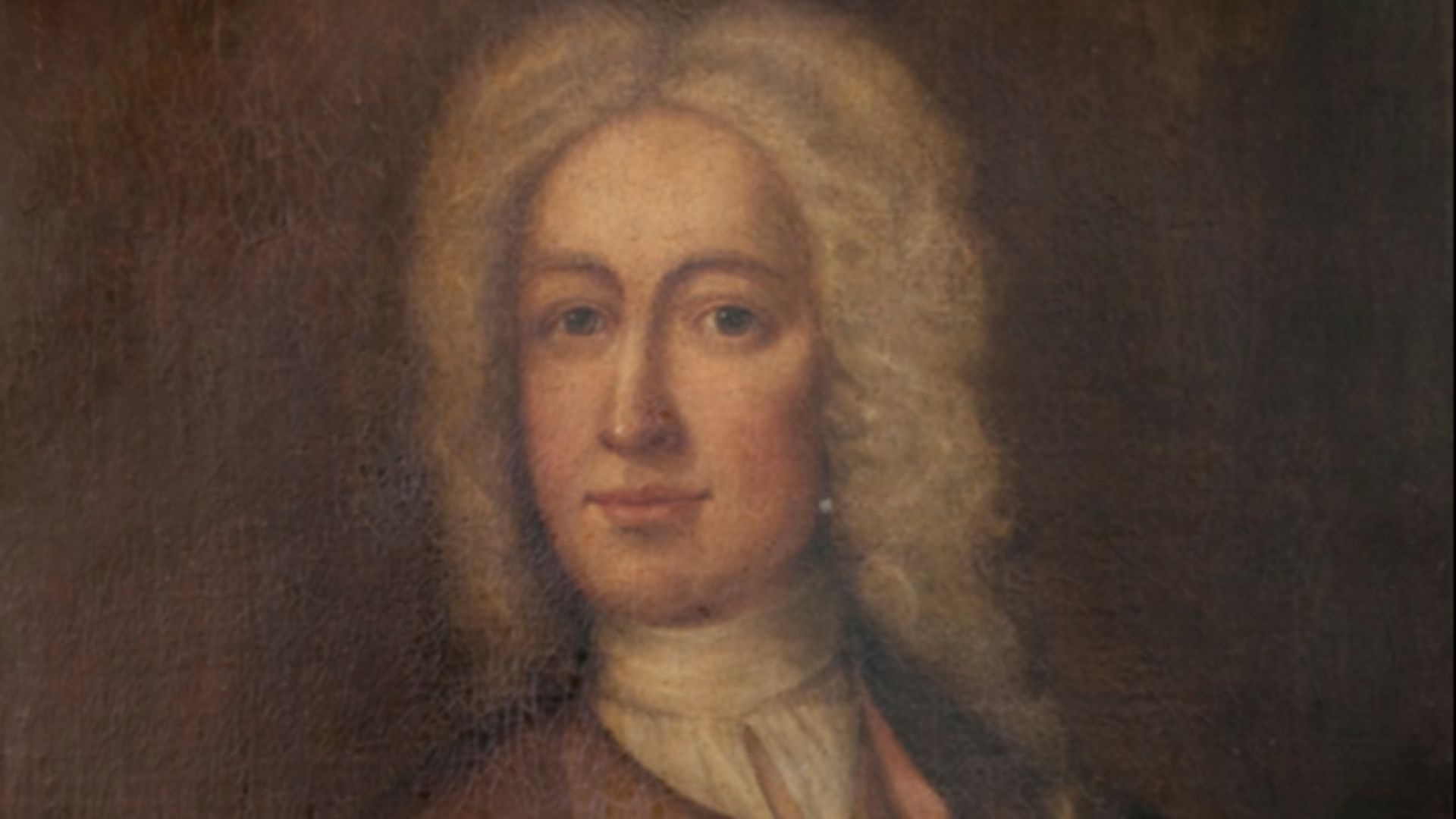 Godfrey Kneller, Wikimedia Commons
Godfrey Kneller, Wikimedia Commons
American Historical Interest
Well, historians largely overlooked Roanoke until 1834, when George Bancroft mentioned the colony in A History of the United States. He rightly emphasized Raleigh's nobility, Fernandes' treachery, Native American threats, and the colonists' courage in facing an unknown fate.
 Attributed to William Segar, Wikimedia Commons
Attributed to William Segar, Wikimedia Commons
Virginia Dare In Literature
The first known use of “The Lost Colony" phrase appeared in Eliza Cushing's 1837 work Virginia Dare; or, the Lost Colony. This historical romance showed Dare as a cultural symbol by depicting her raised by natives after other colonists were killed.
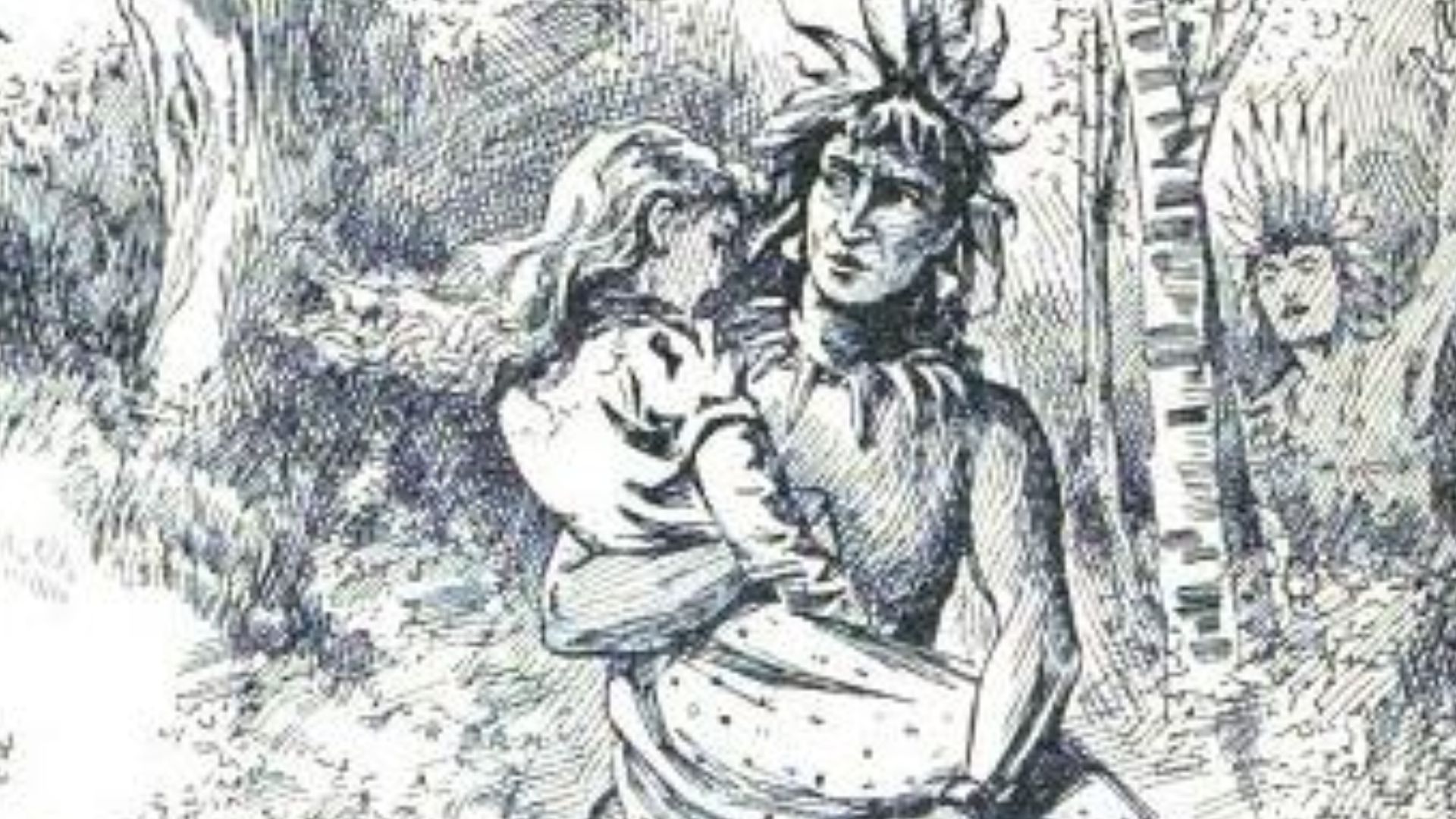 unknown illustrator (novel written by Mrs. E. A. B. Shackelford), Wikimedia Commons
unknown illustrator (novel written by Mrs. E. A. B. Shackelford), Wikimedia Commons
White Doe Mythology
Similarly, Cornelia Tuthill's 1840 story introduced Virginia Dare as a figure turned into a white doe. The folklore concept was expanded in an 1861 Raleigh Register serial by Mary Mason and most famously in Sallie Southall Cotten's 1901 poem titled "The White Doe".
 Internet Archive Book Images, Wikimedia Commons
Internet Archive Book Images, Wikimedia Commons
Cultural Symbol
Apparently, Dare's popularity in the 19th and early 20th centuries coincided with debates about immigration and the treatment of minorities. Her character became a symbol of white nationalism, though this discriminatory connotation subsequently diminished as her story entered mainstream American folklore.
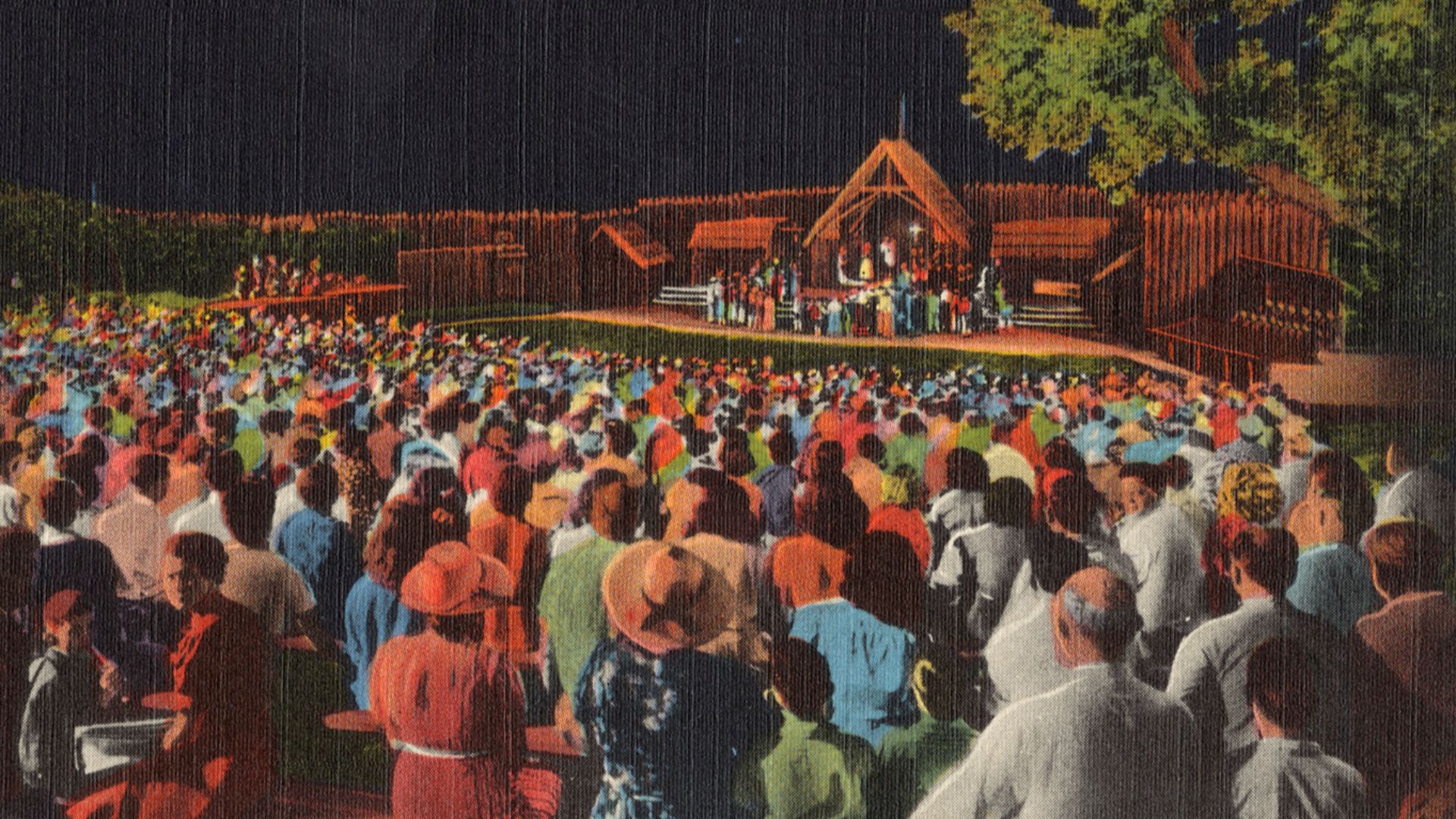 Boston Public Library, Wikimedia Commons
Boston Public Library, Wikimedia Commons
Tourism Development
Interestingly, celebrations of the Lost Colony began on Virginia Dare's birthday in the 1880s. Paul Green's play, The Lost Colony, opened in 1937 and continues production today. President Franklin Roosevelt even attended a performance on Virginia Dare's 350th birthday that year.
 Federal Theatre Project/Roanoke Island Historical Association, Wikimedia Commons
Federal Theatre Project/Roanoke Island Historical Association, Wikimedia Commons
Drought Hypothesis
Research conducted by David Stahle and Dennis Blanton in 1998 revealed that Tidewater Virginia endured an extreme drought from 1587 to 1589. According to Tree ring analysis, 1587 was said to be the worst growing season in 800 years, corroborating accounts of food shortages.
DNA Research Challenges
Since 2005, researcher Roberta Estes has attempted to establish genetic links between colonists and potential Native American descendants. The project faces significant challenges, primarily the lack of confirmed remains from colonists to serve as comparison points.
 California Historical Society Digital Collection, Wikimedia Commons
California Historical Society Digital Collection, Wikimedia Commons
Archaeological Discoveries
Archaeological work at Roanoke began in 1887. A brass ring spotted at Cape Creek in 1998 was initially thought to be connected to the settlers, but later analysis proved inconclusive. Also, shoreline erosion has likely submerged parts of the original settlements.
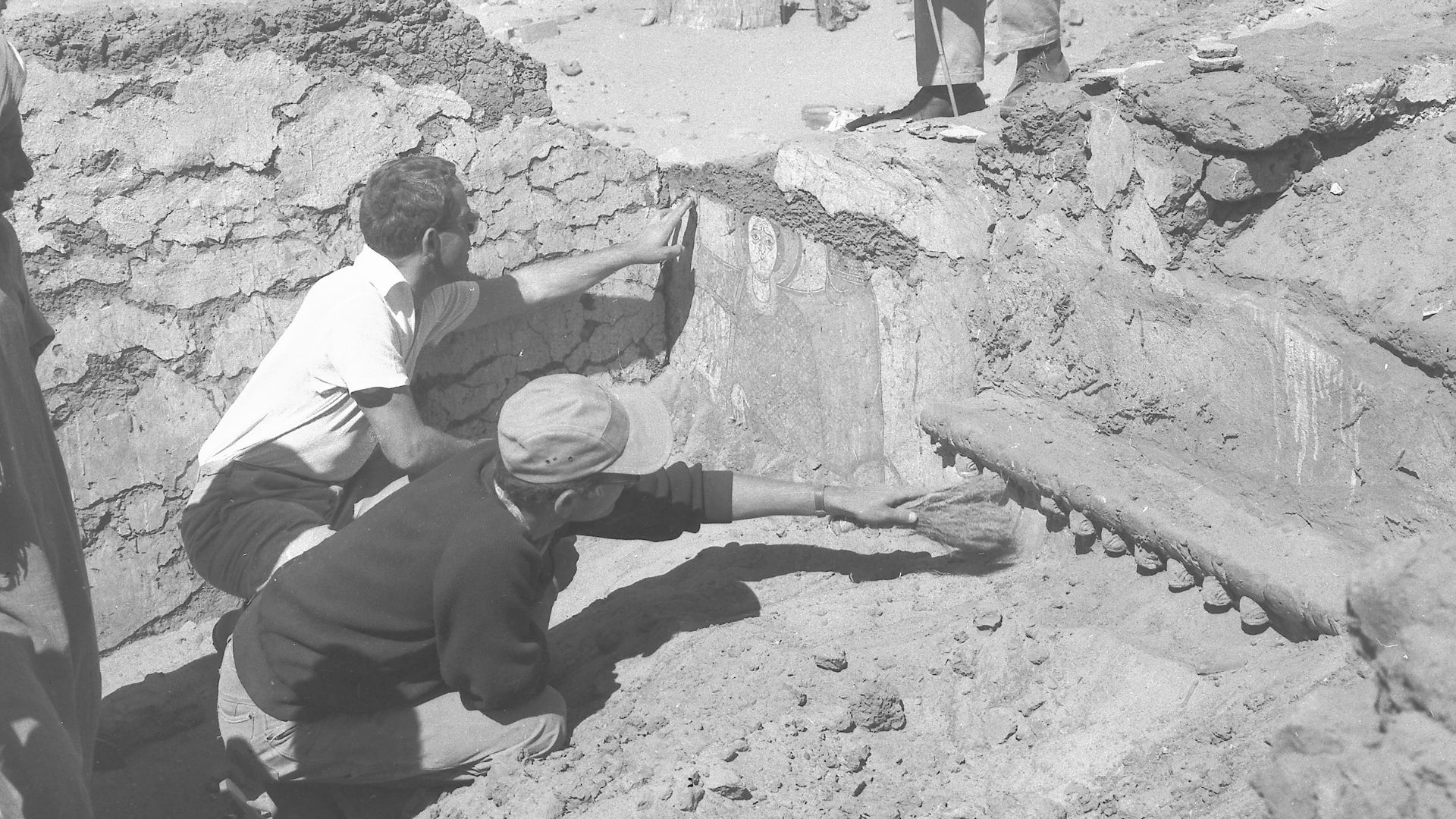 Tadeusz Biniewski, Wikimedia Commons
Tadeusz Biniewski, Wikimedia Commons
Site X Theory
In 2011, some researchers noticed hidden markings on White's 1585 map. Using a light table, the British Museum found a symbol representing a fort at the Confluence of the Roanoke-Chowan Rivers. Excavations at this "Site X" then uncovered Tudor artifacts suggesting colonist presence.
 National Park Service, Wikimedia Commons
National Park Service, Wikimedia Commons
Assimilation Theory
The most prevalent theory tells us that colonists once integrated with friendly Native American tribes. Mark Horton's archaeological findings on Hatteras Island, including European sword and gun fragments at a Native American village site, support this assimilation hypothesis.
 Ellerncroft, Wikimedia Commons
Ellerncroft, Wikimedia Commons
Return To England Theory
Some scholars propose colonists attempted to return to England using the pinnace left behind by the 1587 expedition. This small vessel might have been lost at sea with all aboard, explaining their complete disappearance. Besides, ships of similar size occasionally made transatlantic voyages.
 Alfred R. Waud Internet Archive Book Images, Wikimedia Commons
Alfred R. Waud Internet Archive Book Images, Wikimedia Commons
The Dare Stones Controversy
Between 1937 and 1941, a series of inscribed stones allegedly written by Eleanor Dare appeared, detailing the colonists' journey and fate. Most were proven fraudulent and linked to stonecutter Bill Eberhardt, though the first stone's authenticity remains debated.
 Nesnad, CC BY 4.0, Wikimedia Commons
Nesnad, CC BY 4.0, Wikimedia Commons
Beechland Settlement
Local legends in Dare County tell of an abandoned settlement called "Beechland" within what is now Alligator River National Wildlife Refuge. Small coffins with Christian markings were said to be found. This suggested a possible connection to the Lost Colony.
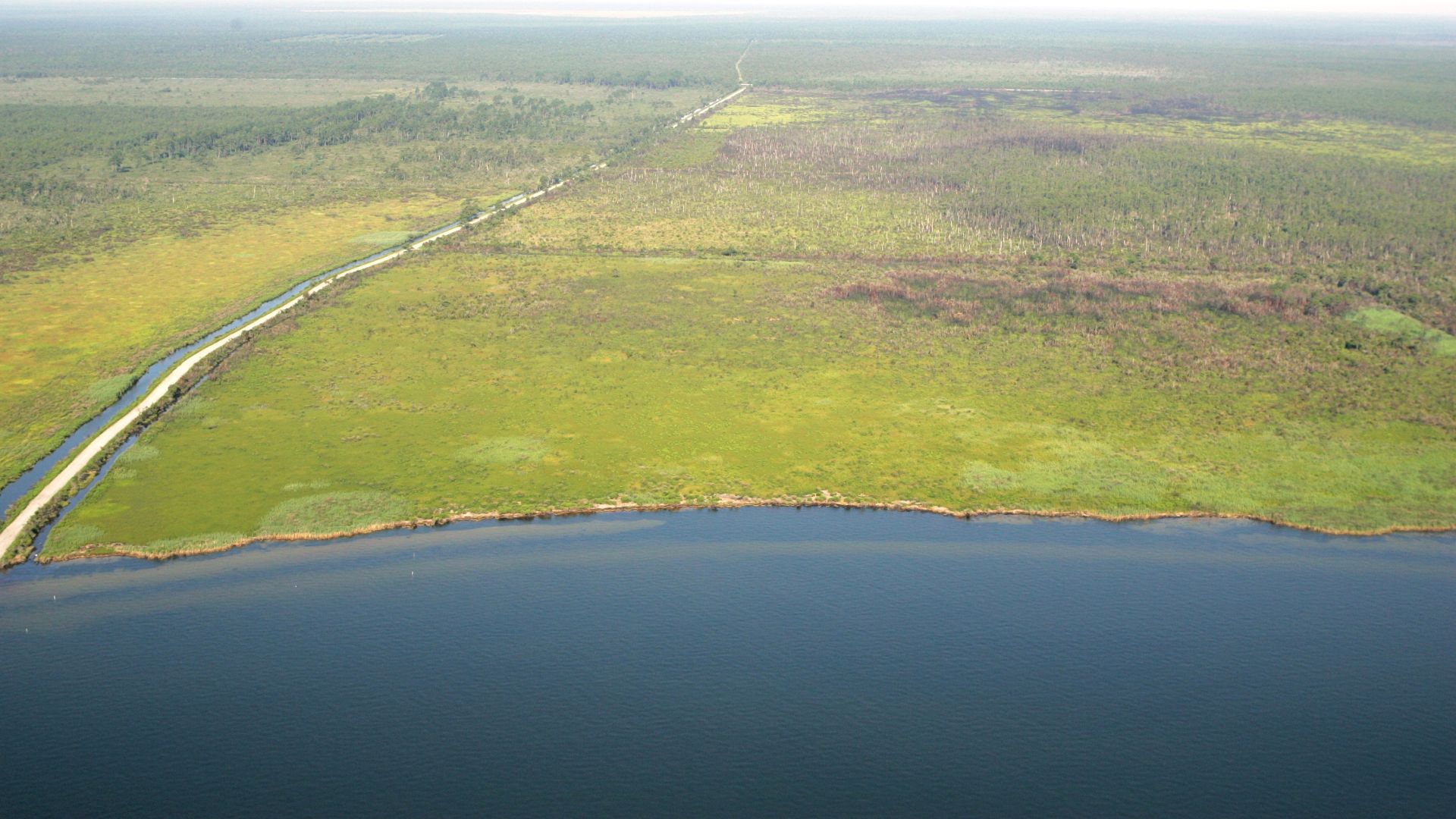 U.S. Fish and Wildlife Service Headquarters, Wikimedia Commons
U.S. Fish and Wildlife Service Headquarters, Wikimedia Commons
Spanish Attack Theory
Spanish documents reveal they were actively searching for English colonies before White's colonists arrived. Spain claimed North America as part of "La Florida" and did not recognize England's right to settle. Well, a Spanish attack could explain the colony's disappearance.
CORA Tree Mystery
A Southern live oak on Hatteras Island bears the inscription "CORA" in its bark. A couple of officials propose this might be another message from colonists, similar to "CROATOAN," possibly indicating relocation to the territory of the Coree tribe near Lake Mattamuskeet.
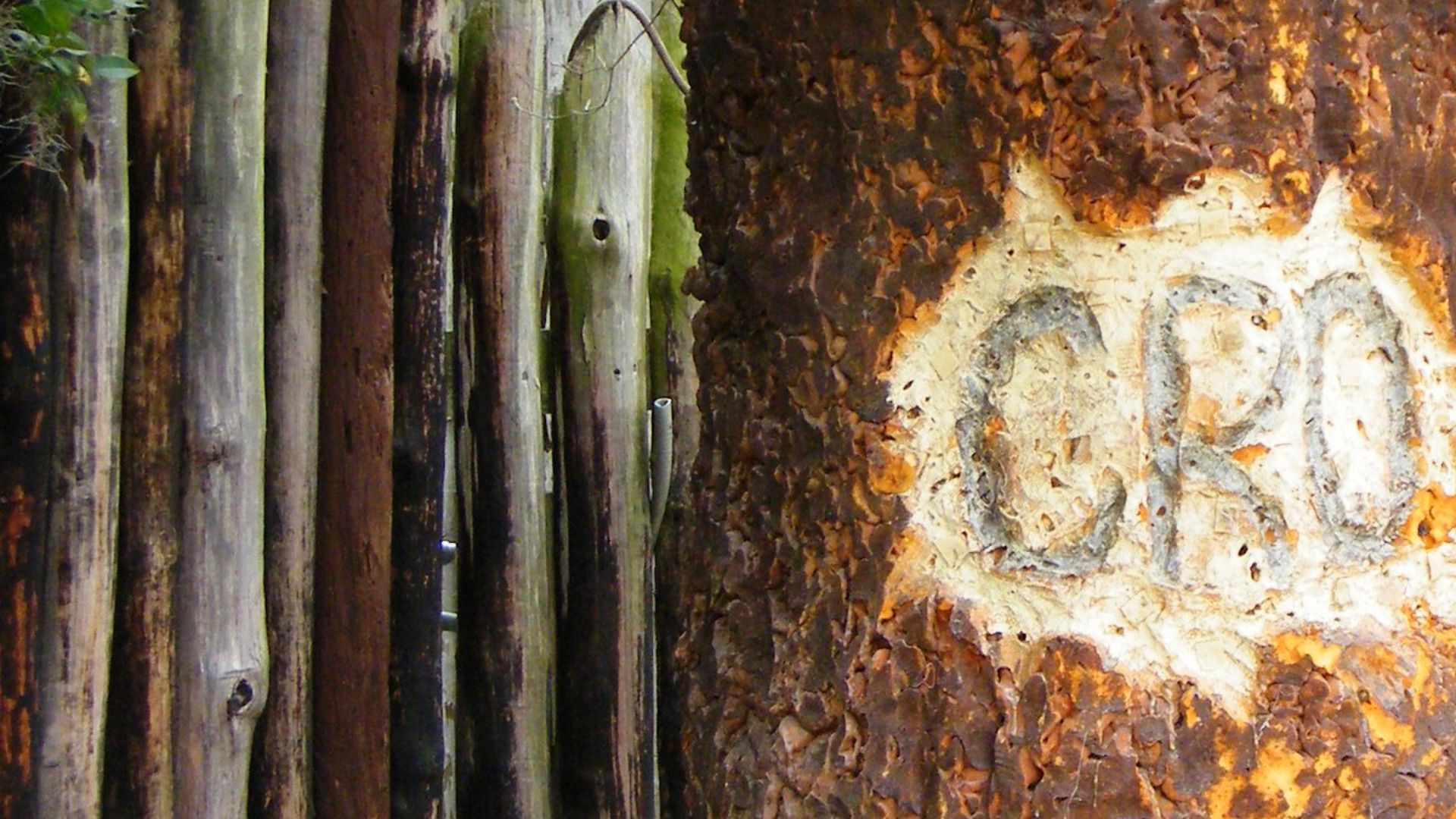 Sarah Stierch, Wikimedia Commons
Sarah Stierch, Wikimedia Commons
Conspiracy Theory
Anthropologist Lee Miller devised a conspiracy. It involved Francis Walsingham and Simon Fernandes intentionally marooning the colonists at Roanoke and undermining Walter Raleigh's influence. The theory, in a way, suggests that Walsingham viewed the colonists as religious separatists and potential risks.
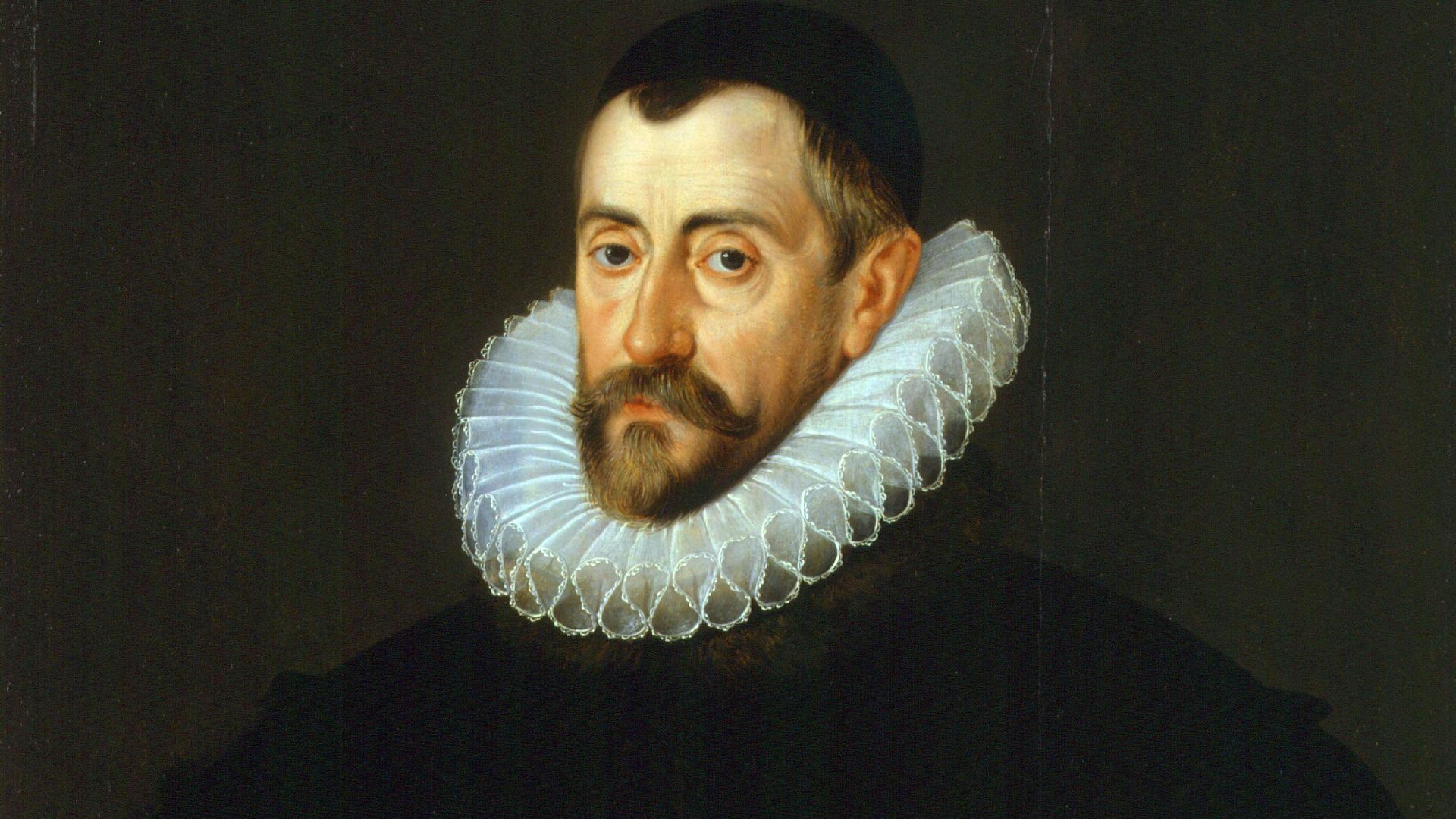 Attributed to John de Critz, Wikimedia Commons
Attributed to John de Critz, Wikimedia Commons
Sassafras Operation Hypothesis
According to another such theory, Raleigh covertly sent colonists to the Alligator River to gather precious sassafras. It's possible that false records claiming the colony was lost were made to conceal this business venture from Spanish rivals and preserve Raleigh's monopoly.
 Randy Everette, Wikimedia Commons
Randy Everette, Wikimedia Commons
Chesapeake Bay Massacre
Using tiny boats, David Beers Quinn hypothesized that colonists moved to the Chesapeake Bay, leaving lookouts at Croatoan. He thought they assimilated with the Chesapeake tribes until they were slaughtered by Chief Powhatan in 1607, presumably in retaliation for Indians being abducted by the English.
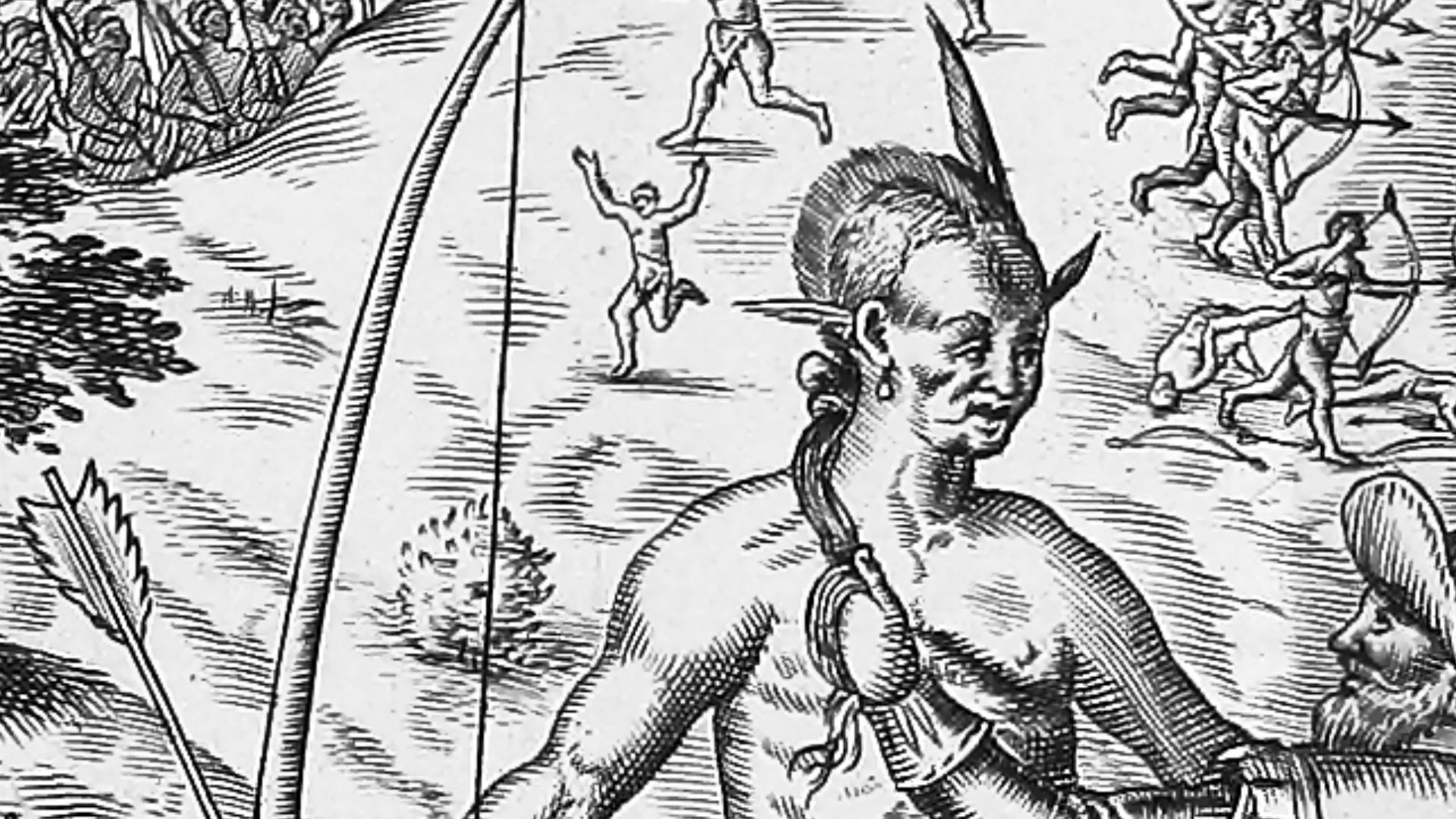 Robert Vaughan, Wikimedia Commons
Robert Vaughan, Wikimedia Commons
Linguistic Evidence
In 1888, Hamilton McMillan documented surnames and linguistic patterns in the Native American community of Robeson County. These closely resembled those of Lost Colonists. His efforts led to the ultimate state recognition of the "Croatan" tribe, later renamed Lumbee in 1956.
Archaeological Limitations
Identifying conclusive archaeological evidence remains difficult because artifacts could originate from either the 1585 or 1587 colonies. However, researchers note a truly definitive find would be female remains (since the 1585 colony was exclusively male) buried in the Christian tradition.
2020 Breakthroughs
In 2020, researchers found European artifacts at sites 50 miles west and south of Roanoke Island. The analysis focused on distinguishing Lost Colony items from later Jamestown-era materials by examining objects like clay pipes. This provided new evidence of the colonist movement.
Dawson's Dismissal Of Mystery
Scott Dawson's book The Lost Colony and Hatteras Island, published in 2020, asserted that colonists on Hatteras simply melded with the Croatoan people, claiming the mystery was set up. Archaeologists rejected this conclusion, however, saying that it was “storytelling, not evidence-based information”.



